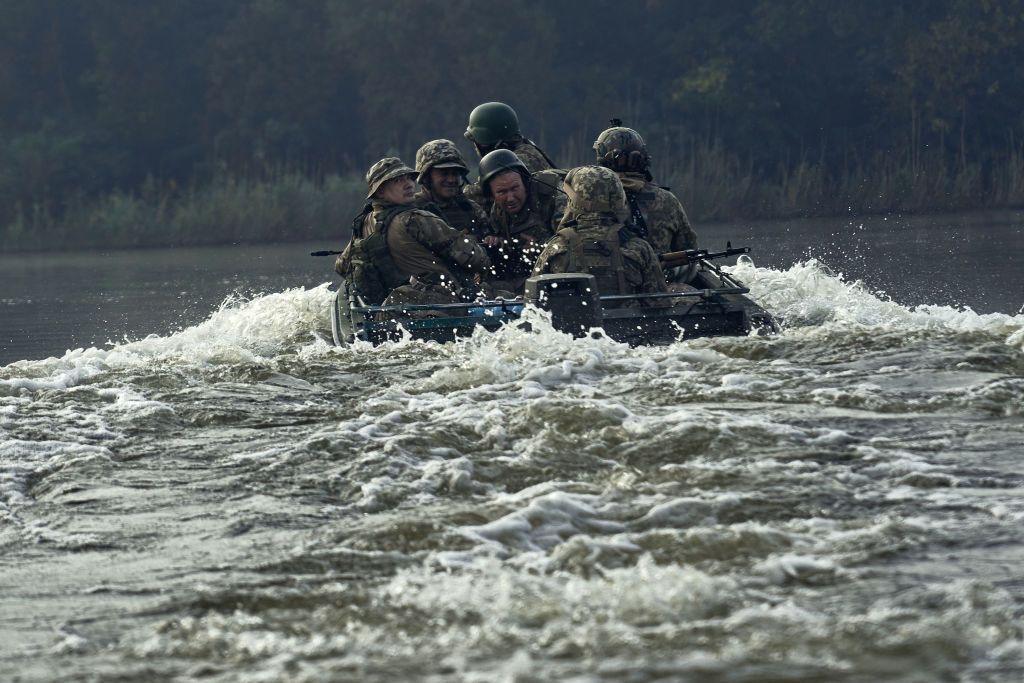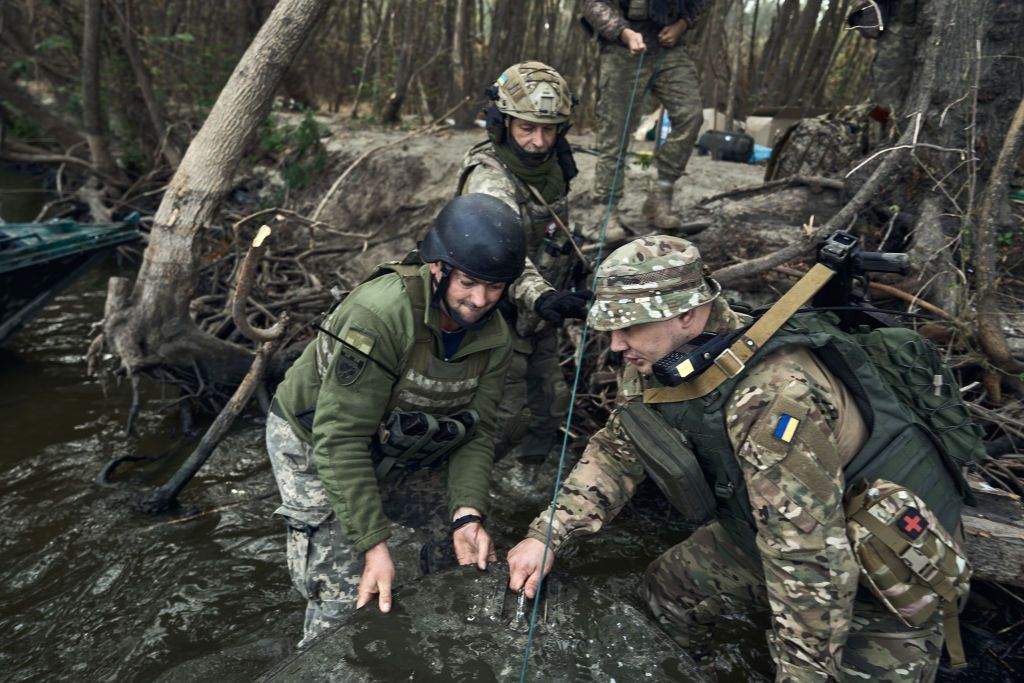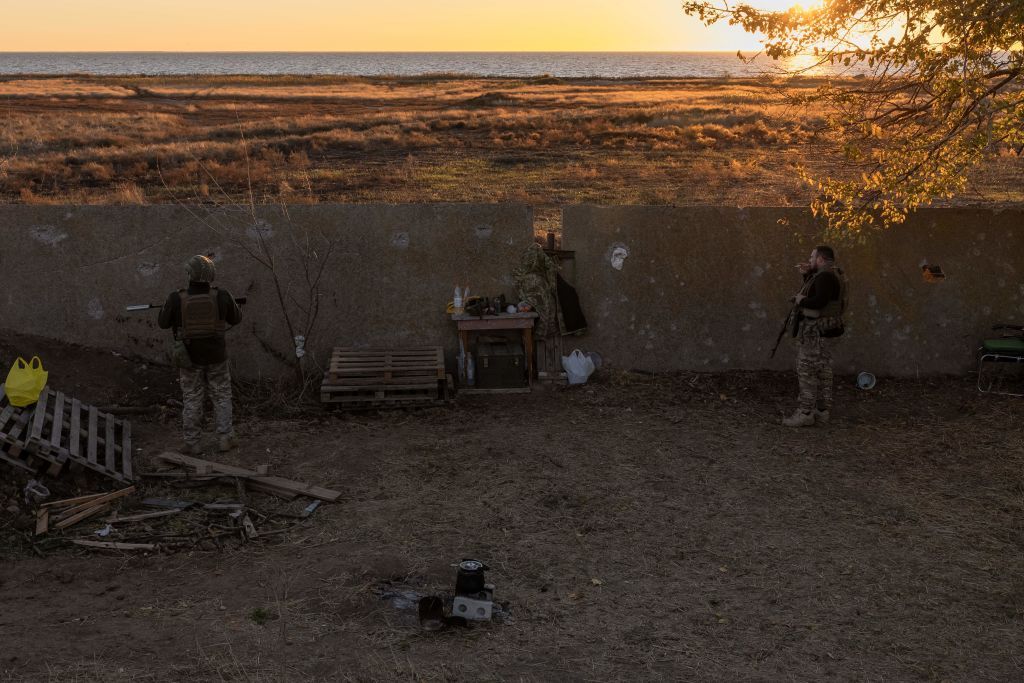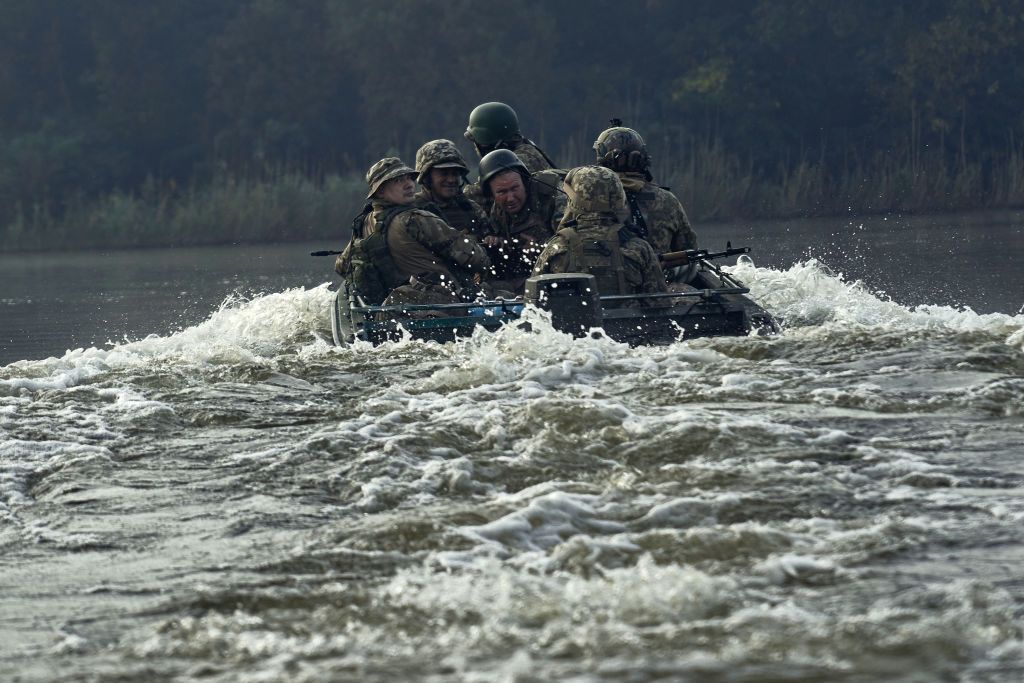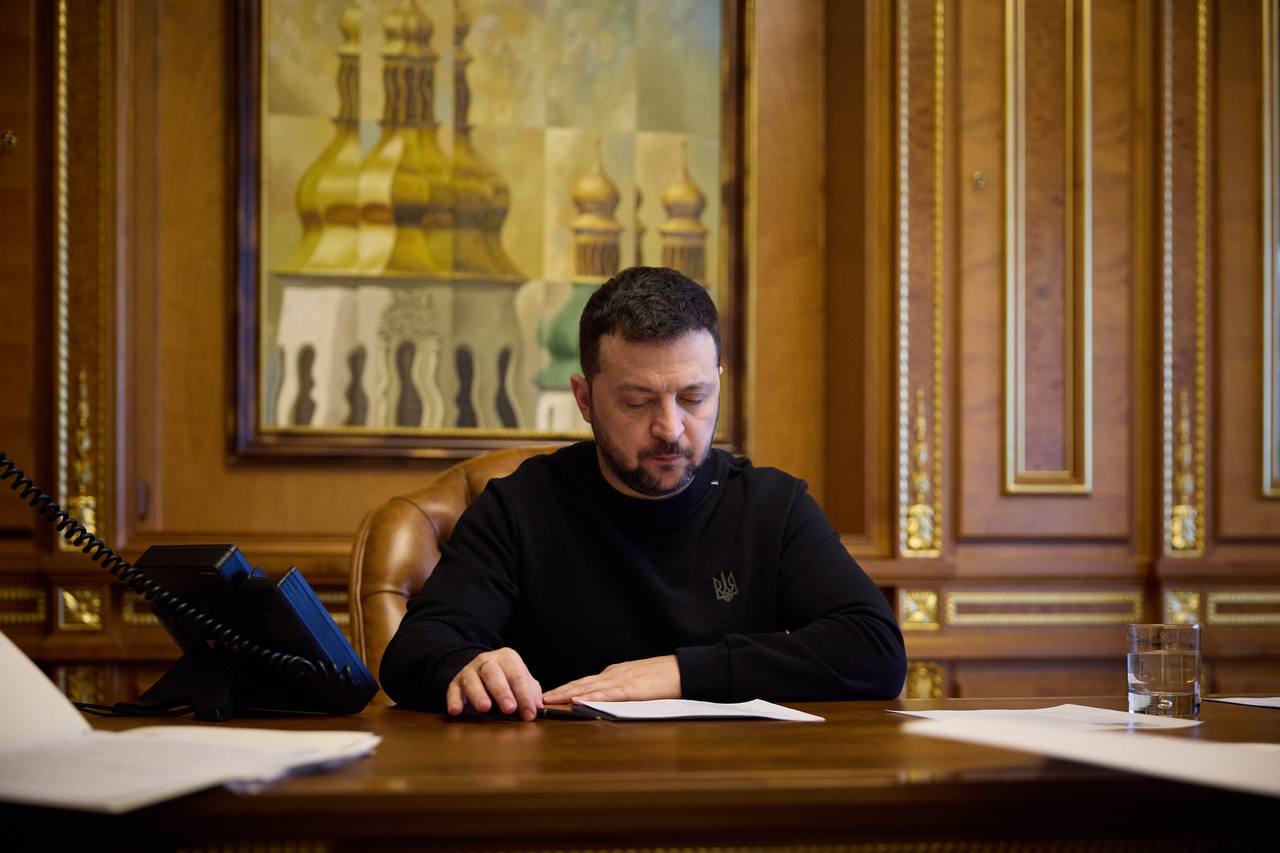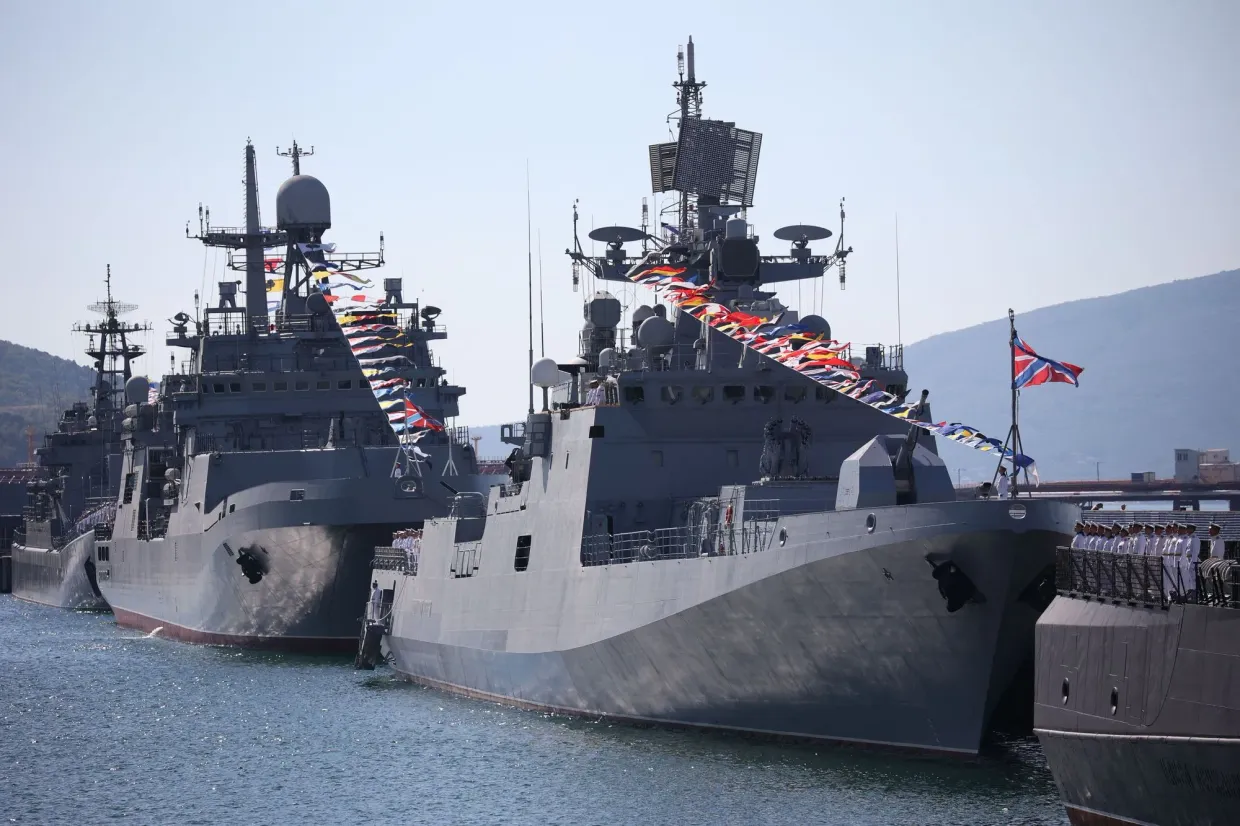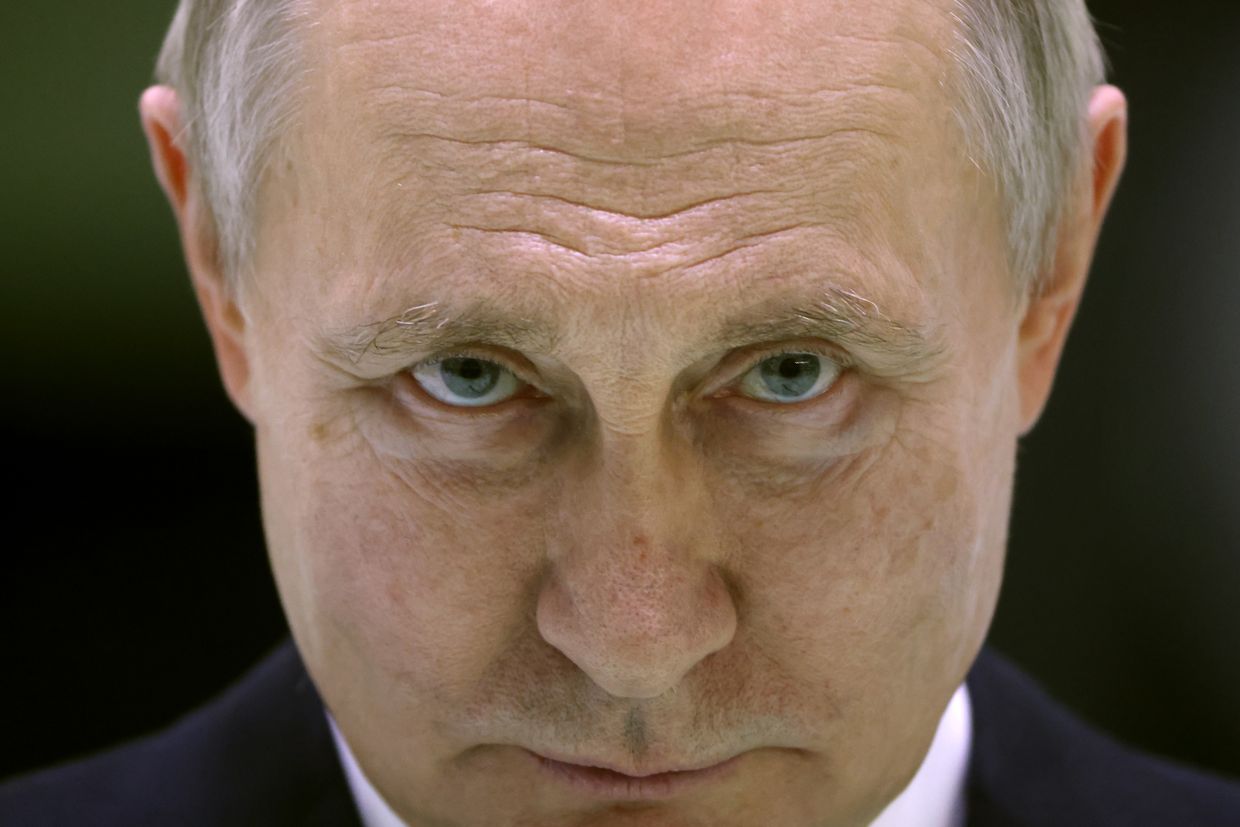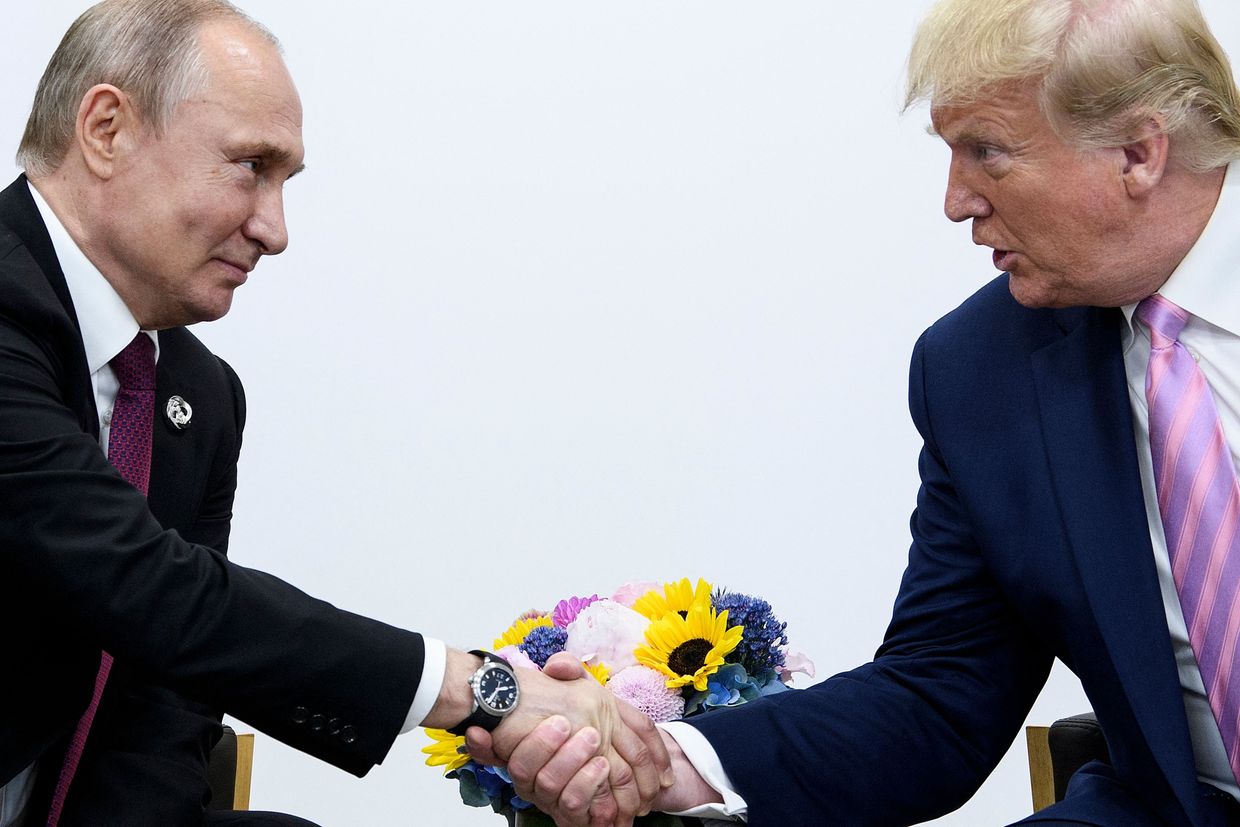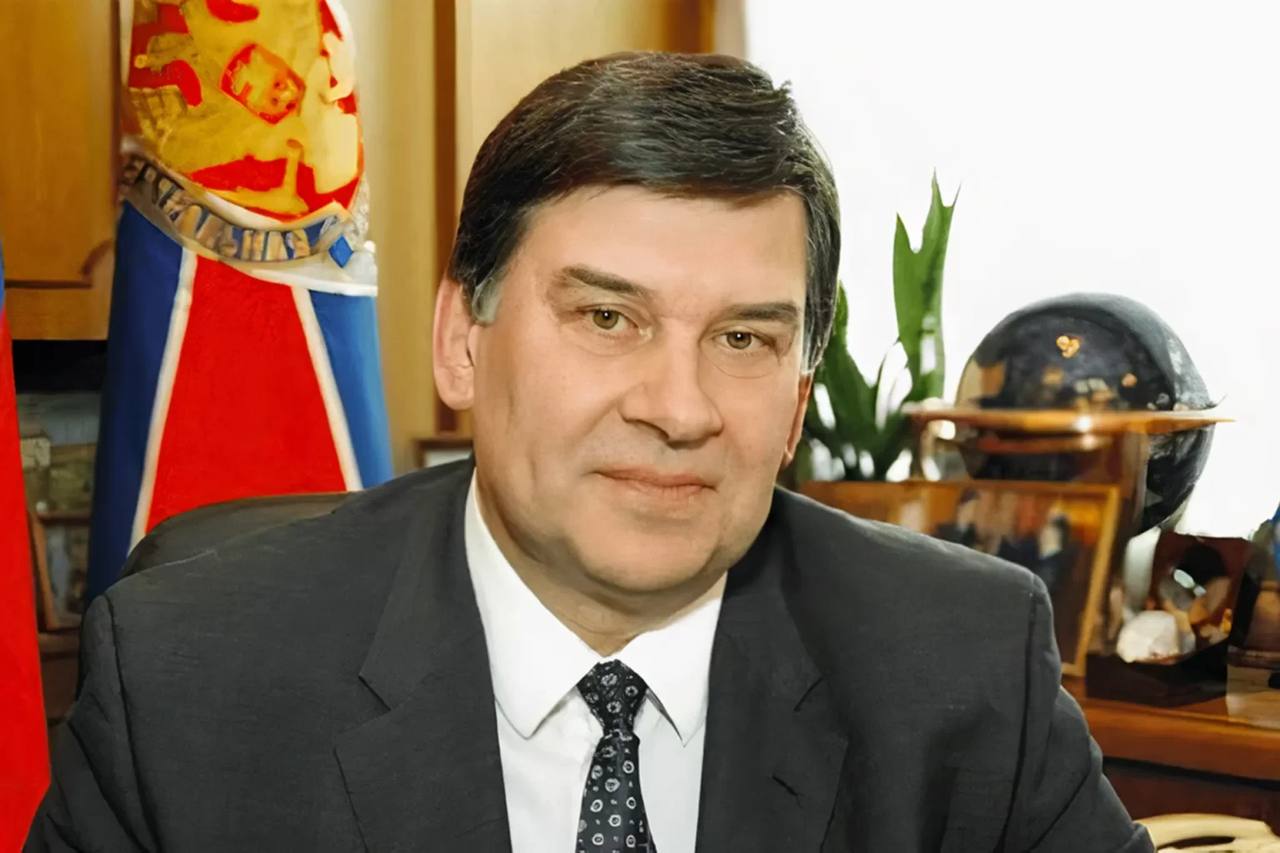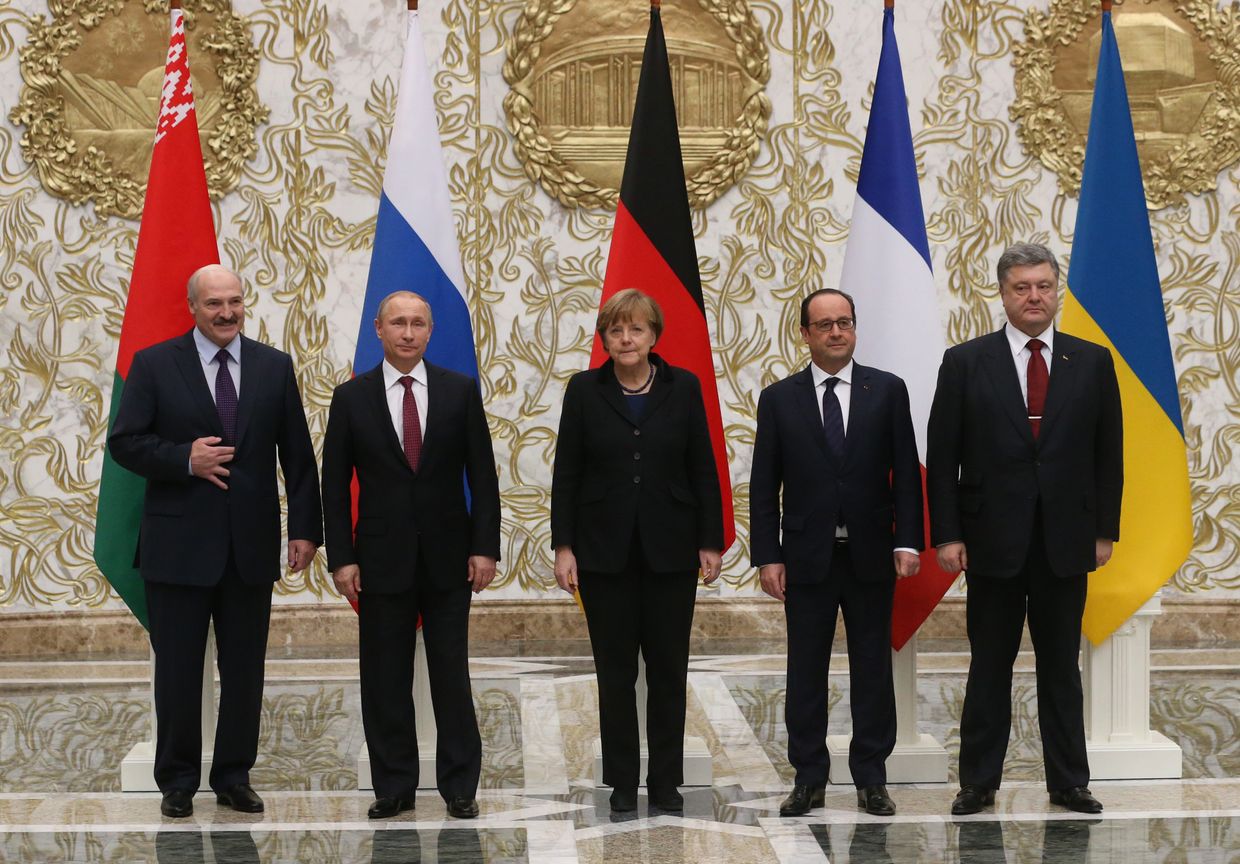Editor’s note: Full names and the deployment locations of the soldiers interviewed for this story are not disclosed since they weren't authorized to speak to the press.
KHERSON OBLAST – Mortars are the first things that greet the Ukrainian soldiers who are lucky enough to make it across the Dnipro River alive.
No matter how sneaky the Ukrainian small units try to be, it’s not hard for the Russian forces holding the eastern bank to see them coming. Russian drones are always on the hunt, boat motors are loud and suitable troop-landing spots are few.
Once Ukrainians are spotted, the Russians either chase them with first-person-view (FPV) drones or drop mortars on them. Bodies lost to the river are nearly impossible to retrieve, the soldiers say.
Making it across is just the beginning. Plodding hundreds of meters through marsh and knee-high water, with no cover from mortars, artillery, tanks, drones and aircraft, is almost as scary.
The Ukrainian soldiers maintain distance from each other so at least one of them survives to call in an evacuation.
“(KAB guided aerial bombs) are the least scary because you understand that they will hit, and you won’t feel anything,” reconnaissance soldier Oleksandr, 25, said.
All these risks are in service to what the soldiers call a small, high-stakes operation to probe the Russian fortifications on the eastern bank of Ukraine’s biggest river, around a kilometer wide in its southern parts, flowing through Kherson Oblast.
The Russians have been driven out of the western side in the fall of 2022.
Nearly half a year into its operation to strike at the occupied side, Ukraine has been able to secure a thin, long bridgehead along the coast with a width that ranges from 2.5 kilometers to 300-500 meters in some spots, according to the soldiers and officers interviewed.
The areas near the destroyed village of Krynky are where Ukraine has achieved the most success, penetrating roughly 2.5 kilometers from the river coast, according to soldiers. They need long-range artillery and missile support and strong air defenses to push farther, but these things are in short supply in the south, according to troops and experts.
Even holding on to the existing bridgehead requires soldiers to take enormous risks, as ammo, drones, boats and special equipment like thermal imaging are in short supply. Many of them have called it “suicidal.”
“Across the river is practically impossible,” 32-year-old drone operator Oleh, who observes firm Russian defense lines from the western bank, said.
“You get to the other side (of the Dnipro River), and then what next? What can they (Ukrainian soldiers) do? You can’t go forward because Russians are there, backward not because of the water.”
Reinforcing the eastern bank is difficult. There’s no time to dig and little point in digging – you can only go down half a meter before hitting water.
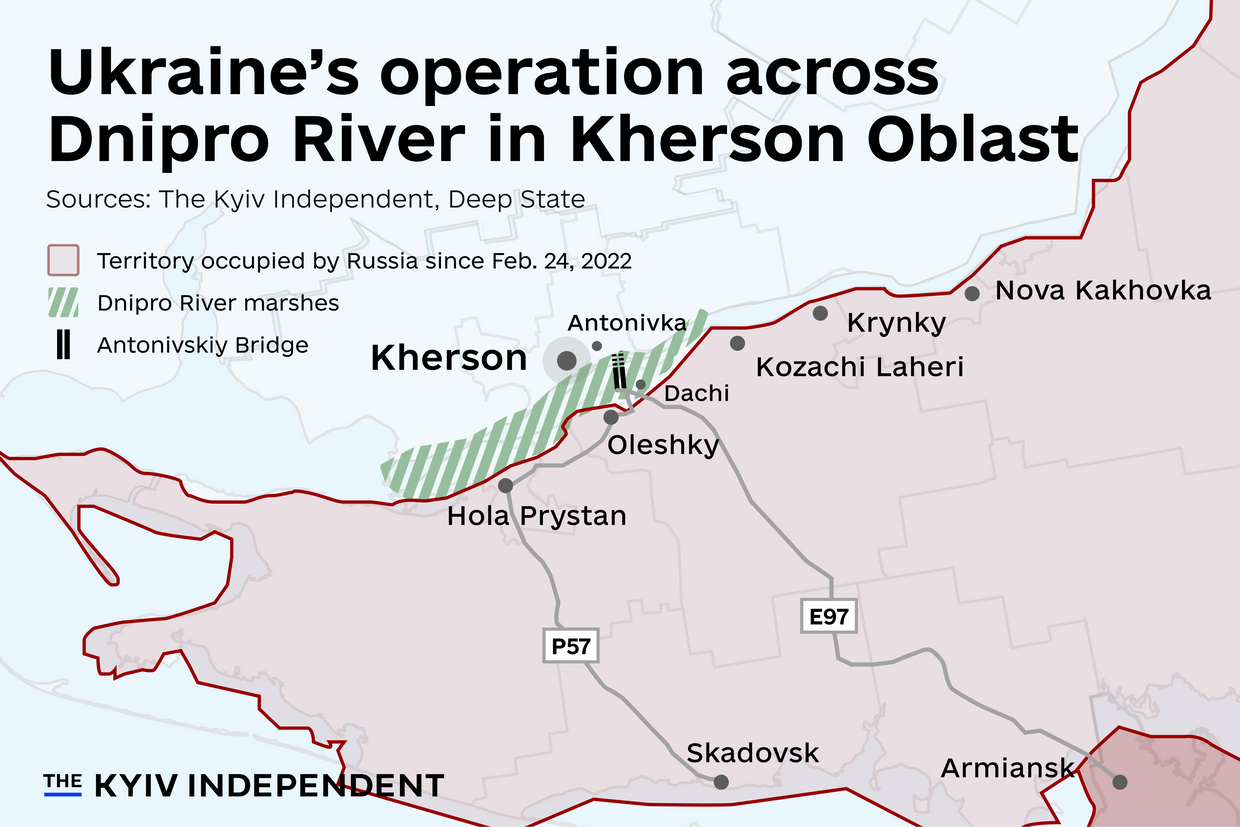
Acknowledging that any breakthrough on the eastern bank is unrealistic for now, especially with the lack of heavy weaponry, many soldiers and officers view the operation as more of Ukraine’s effort to reassure some progress to Western allies.
Observing the political theater from a distance and death in proximity, the soldiers say they are hurt that their lives are put in jeopardy for what they say they perceive as a “political decision” to have a symbolic success on the battlefield.
“People are killed to hold on to the ruins,” said 47-year-old Senior Sergeant Petro, who leads a radio intelligence platoon of roughly 20 men with the 38th Separate Marine Brigade.
After the highly-anticipated summer 2023 counteroffensive failed to achieve its goals, Ukrainian and Western politicians used this little bridgehead to peddle hope to their allies in a static war.
It coincides with the new military aid pledges to Ukraine over August-October 2023 hitting their lowest since the start of the full-scale invasion, with an 87% drop year-to-year, according to the Kiel Institute, which tracks Ukraine aid.
“Against all odds, Ukraine’s defense forces have gained a foothold on the left (eastern) bank of the Dnipro,” President Volodymyr Zelensky's Chief of Staff Andriy Yermak said during his November visit to the U.S.

During an interview with the Kyiv Independent, European Council President Charles Michel said that the bridgehead on the river’s eastern bank was one of the two reasons why he thinks Ukraine’s counteroffensive wasn’t a failure.
“The recent progress made on the left (eastern) side of the Dnipro River is very important,” Michel told the Kyiv Independent.
Political and military analysts are divided on how politics interfere with operational decisions.
Oleksiy Melnyk, co-director of foreign policy and international security at the Kyiv-based think tank Razumkov Center, said that while he couldn’t rule out that there was a political objective for the operation, he also saw “a clear military purpose” for it.
Even if there is a political objective, it’s unlikely that this operation is reaching it, he added.
“I can hardly imagine that Ukraine can impress anyone in either Ukrainian society or among our international partners by simply reporting that, look, there is a stronghold on the left (eastern) bank,” he said.
Retired Lieutenant General Ben Hodges, a former commander of the U.S. Army in Europe, said it was politically and strategically important for Ukraine to still try to retain the initiative, even if a successful offensive across the river doesn’t look possible now.
Michael Kofman, defense analyst and senior fellow at Carnegie Endowment, said that the Dnipro River operation has several goals.
"Although one can identify military goals, the operation also appears to have political objectives, giving the sense that Ukrainian forces are still on the offensive,” he said.
“Consequently, perceptions may be the driving factor even if prospects for success appear dubious at this point,” Kofman said, adding that the operation would have “a stronger rationale” if coordinated with a breakthrough in neighboring Zaporizhzhia Oblast, though the latter never happened.
The analyst said he is unsure what Ukraine can achieve on the eastern bank at this stage relative to its costs, especially due to the artillery ammunition shortage and the difficulty of moving equipment across the river.
Ukraine’s Defense Ministry and the military didn’t respond to questions about the operations in Kherson Oblast by the time of publication.
Human toll
Petro still remembers the shiver he felt when he saw two bodies on thermal sights, right after a Russian mortar attack.
All evening on that day in late October, Petro was nervously observing his drone operators’ first deployment across the river from a base near Kherson.
The 11-man group got hit by mortars shortly after the landing. It usually takes a few minutes for the Russian forces to pass the coordinates of where the Ukrainian boats landed to mortar units, according to Petro.
Two newcomers in their 20s were killed, and one was wounded.
The most painful thing was seeing everything from a distance and not being able to help, Petro said.
Once the shelling stopped, Petro and three others evacuated the KIAs. The dead are harder to carry than the living.
“With a 200 (military code for the killed), it’s always harder,” veteran soldier Petro said, recalling how they evacuated the bodies with a portable stretcher. “When it’s a fresh 200, he is very soft, and he falls off easily.”
“(A fallen soldier) doesn’t help you. But a 300 (military code for the wounded), he holds on to your hands, and you can carry him.”
Since being transferred to the south this fall from a counteroffensive on the Velyka Novosilka axis in Donetsk Oblast without barely any break, Ukrainian marines, including the elite 35th Separate Marine Brigade and newly-formed units, have suffered extreme losses.
A reconnaissance platoon of 30 men from Petro’s company, for example, was gone in the first month, he said. Only two from the platoon remained in action as of late November, and most of the others were killed during the mission, he added.
“I’ve nearly reached a limit, there is no more strength (to keep going emotionally),” said Petro, who has spent most of the last 10 years fighting in the war’s hottest spots. “Emotion piles up, and it will overflow at some point. Honestly, I’m scared (of this).”
For Petro, nothing is scarier than imagining how many more could be killed the longer the operation continues.
‘They won’t give it up’
Still, experts say there’s some sense in holding the bridgehead at all costs.
Hodges said the strategic importance of the bridgehead will depend on what Ukraine is able to do with it.
Some of the possible goals of Ukraine’s operation on the eastern bank could include bringing long-range weapons such as High Mobility Artillery Rocket Systems (HIMARS) closer so they can strike occupied Crimea or distract Russian forces from another front.
Either way, it’s important to keep pressuring Russian forces and making it harder for them to strike civilian areas, according to Hodges.
Since their withdrawal from the western bank last November, the Russians have been heavily attacking Kherson and environs with airstrikes, drones, artillery, and tanks.
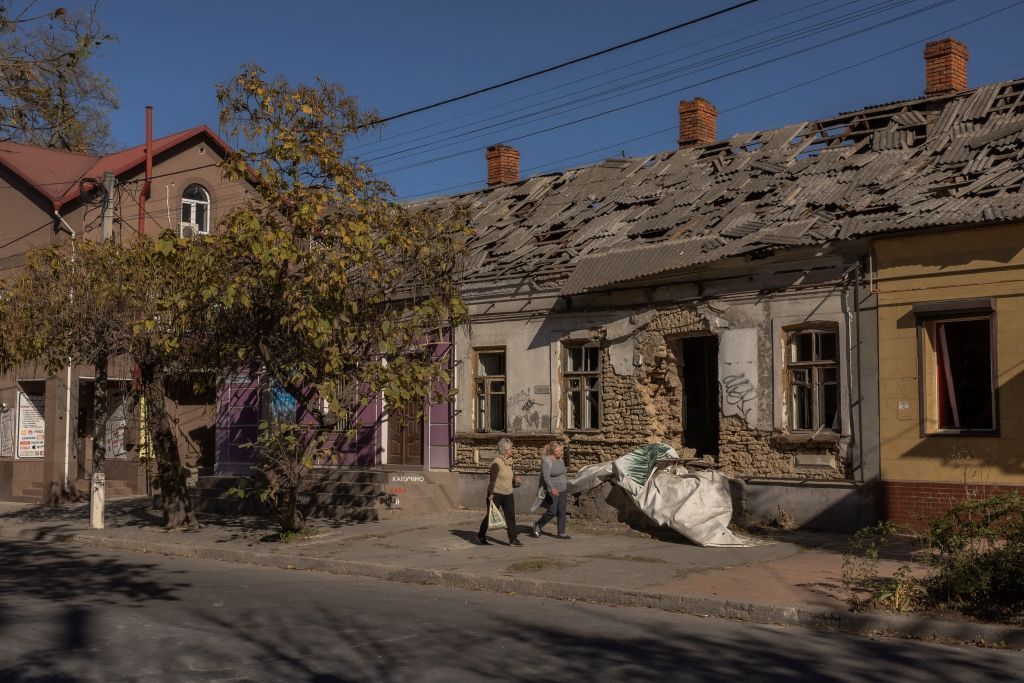
Ukrainian soldiers estimate that they need to push the Russians 10 to 12 kilometers from the river to reduce the shelling and to build something that they can properly call “a bridgehead.”
Per military doctrine, it’s crucial to use air defense to protect the boats and pontoon bridges and to “build up the power on the other side as fast as you can to prevent the enemy from being able to react to it or to get you when you’re so vulnerable,” according to Hodges.
Ukraine may hold on to the bridgehead for months before expanding it, especially as the weather worsens, but “I think they will not want to give this up unless it becomes a waste,” Hodges added.
Given what soldiers describe as Russia’s seemingly endless manpower and weapon stocks, it’s unclear why Russian forces have not been able to recapture this thin foothold on the eastern bank yet.
“Either they can't react to it (because Russia needs to prioritize its ammunition stocks on other fronts), or they don't yet see it as a threat that has to be eliminated yet,” Hodges said.
Russian President Vladimir Putin also mentioned a foothold that Ukrainian troops have acquired in the village of Krynky, during his major press conference on Dec. 15.
Putin said that Russian troops withdrew "for several meters" near Krynky to ensure their safety. He claimed that the Ukrainian foothold on the eastern bank was not an advantage for Ukraine.
"I don't even know why they're doing this," he said.
The costly wait
Until Western nations provide sufficient weapons and ammunition for an offensive on the eastern bank, Ukraine would need to wait, even if it is costly, according to former Ukrainian colonel and military analyst Serhiy Hrabskyi.
He said the current objective appears to be to draw away Russian supplies and manpower from other fronts. Ukraine doesn’t have the resources for a large-scale offensive across the river.
The operation on the eastern bank appears to be pressuring two highways, the E97 highway leading up to Armiansk in occupied Crimea from Oleshky, and the P57 highway from Hola Prystan to Skadovsk.
“Any offensive on the left (eastern) bank can only happen when we have a sufficient number of troops and resources on this left bank,” Hrabskyi said, stressing that the operation is still strategically crucial to push the Russians further from the western bank to protect civilians.
“Generally speaking, in modern war, up to 80% of tasks are decided by artillery.”

For now, Ukrainian soldiers deployed on the front said they were mostly on the defense, trying to hold on to what they had gained.
Near Krynky, Russian forces continued to heavily assault the western part of the village, according to soldiers. They have an exceptionally fortified defense east of Krynky, so moving forward is unrealistic for now, they added.
In areas near the occupied cities of Oleshky and Hola Prystan, located below Krynky, only artillery duels continue, with neither side attempting an assault, according to the soldiers fighting there.
There is no progress in some areas along the river because it is physically impossible to gain a foothold on swamps and dig positions.
‘We are just getting killed’
The costly operation kicked off about a year ago, with Ukrainian soldiers saying that they landed on the islands between the western and eastern banks in February.
Describing the missions then as “raids,” the soldiers said they knew little information about where they were heading, and their job was to find out as they went.
Twenty-three-year-old Oleksandr, then serving as a reconnaissance soldier, remembers poor communication and logistics even as the battle for these islands continued.
The last time he had a river-crossing mission in March, Oleksandr said his group came under a drone attack, but they had to stay on duty for another five days despite the severe concussion.
Then came the flooding in June, caused by Russia’s destruction of a major dam in the south.
While both sides had to initially flee from the islands between the western and eastern banks of the river, Ukrainian soldiers said that they went back out a few days later and soon landed on the eastern bank – near the Antonivskyi Bridge.
Throughout summer, heavy fighting raged near the bridge, destroyed when Russians were retreating from the west bank.
The fighting near the bridge died out in the coming months.
For the next few months in the cold weather, soldiers say they don’t expect the front line to change much.
After months of storming the eastern bank and seeing their comrades killed, the soldiers are fearful of what awaits them — and what it can mean for the war effort in general.
“We are just being killed,” Petro said. “We can run out of people… everywhere.”
______________________________________________________
Note from the author:
Hi, this is Asami Terajima, the author of this article.
Thank you for reading our story. It was emotionally difficult to report on this piece, knowing that these soldiers – who are speaking up about the extremely costly operation on the eastern bank with very little result – still have to go out there the next day to carry on their mission. It was further complicated by Ukraine's media ban on almost anything concerning the situation on the eastern bank. But I believe that these voices of the soldiers must be heard – and their sacrifice remembered.
To help the Kyiv Independent continue telling stories that would otherwise not be told, please consider becoming our supporter.





